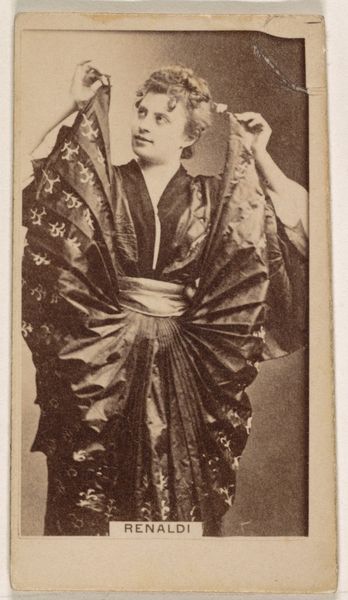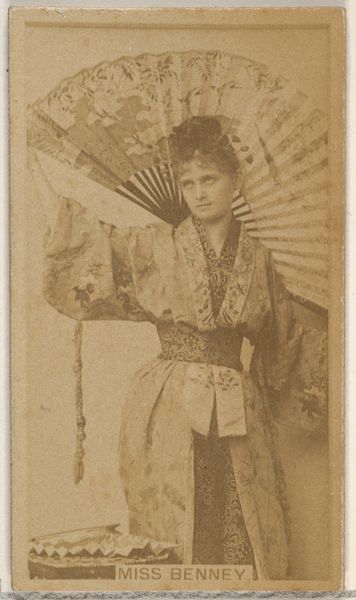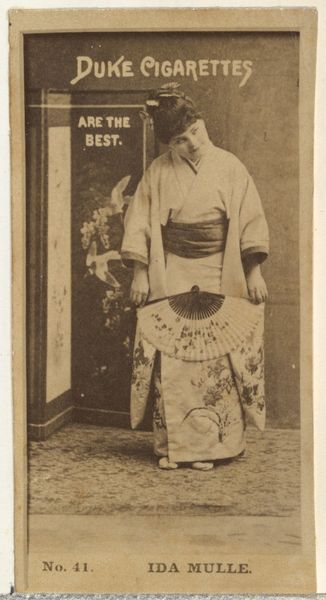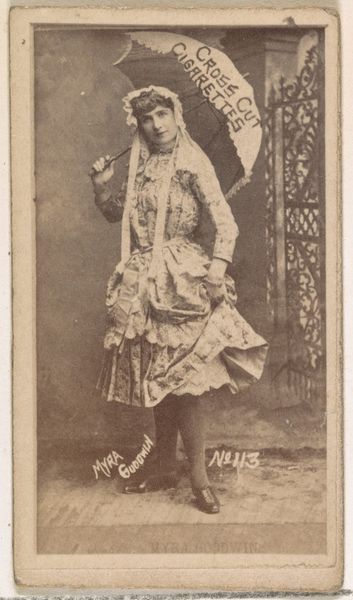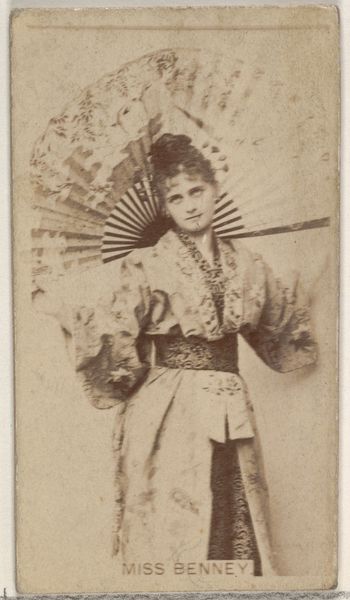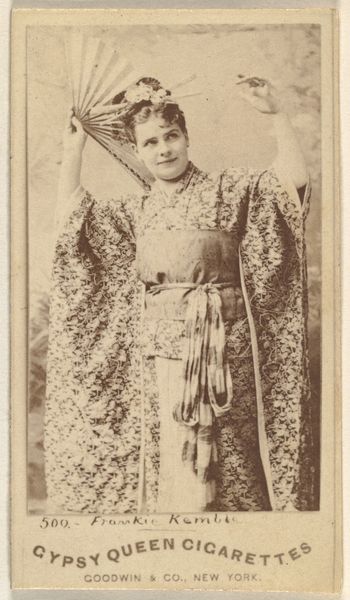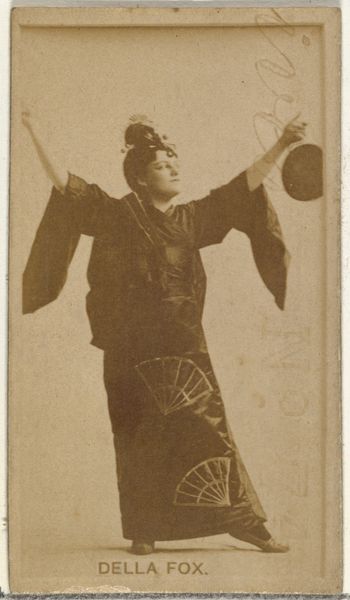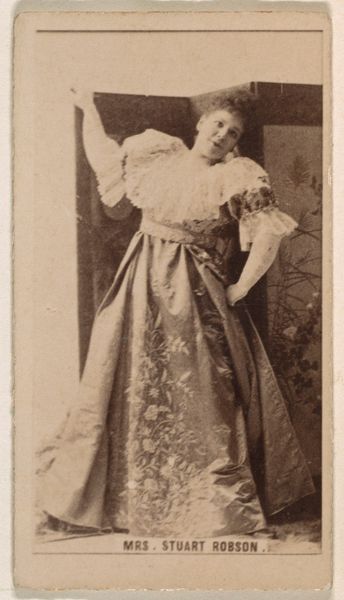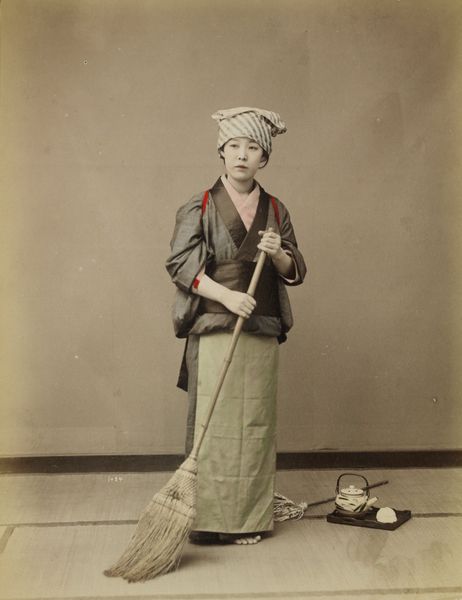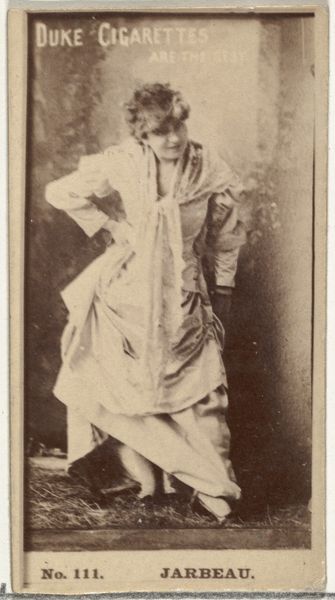
Card Number 180, Geraldine Ulmer, from the Actors and Actresses series (N145-2) issued by Duke Sons & Co. to promote Cross Cut Cigarettes 1880s
0:00
0:00
albumen-print, print
#
albumen-print
#
portrait
# print
#
figuration
#
19th century
Dimensions: Sheet: 2 5/8 × 1 7/16 in. (6.6 × 3.7 cm)
Copyright: Public Domain
Curator: Looking at this, I immediately think of performance and exoticism. There’s something about this image that evokes an artificial orientalism typical of the late 19th century. Editor: Right, let’s get some context here. This is a photograph printed on a small card, dating back to the 1880s. It comes from a series called “Actors and Actresses,” published by W. Duke, Sons & Co. as promotional material for Cross Cut Cigarettes. The depicted figure is Geraldine Ulmer. Curator: So, we’re not just looking at a portrait but a symbol, then? Ulmer, in her staged kimono and with that fan, is less herself and more an idea of "the Orient"— a commodified image designed to sell cigarettes. She becomes an accessible icon of fleeting exoticism. Editor: Precisely. Consider the materiality of the card itself: mass-produced, disposable, intended for wide circulation. It reveals the consumption habits and popular fascinations of the time. This "Orientalism" was manufactured, quite literally. It's not an inherent, immutable quality of Eastern cultures, but a construct. Curator: The fan, in particular, operates on so many levels. Historically, in Japanese culture, fans could represent social status and specific settings for interaction. But here, it’s emptied of any deep significance, a prop for a costume. What it signals in this context is largely fantasy and availability of access. Editor: And consider the role of labor. These cards would have involved photographers, printers, and factory workers. Cheap production facilitated wider distribution, reflecting an industrial process that reduced artistry into standardized imagery. The very appeal relies on exploitation. Curator: Yes. By the look, the card participates in and perpetuates cultural appropriation, turning cultural heritage into shallow consumer content. It’s unsettling. Editor: But by unpacking these complexities, by seeing beyond the immediate image to understand the manufacturing, distribution, and cultural context, we gain critical insight into how cultural symbols become tools. Curator: Absolutely. And it highlights the continuous role of images in shaping perception, even today, about cultural identity. Editor: It really makes you think about what survives. This fleeting promotional piece is now an artifact speaking to us.
Comments
No comments
Be the first to comment and join the conversation on the ultimate creative platform.

